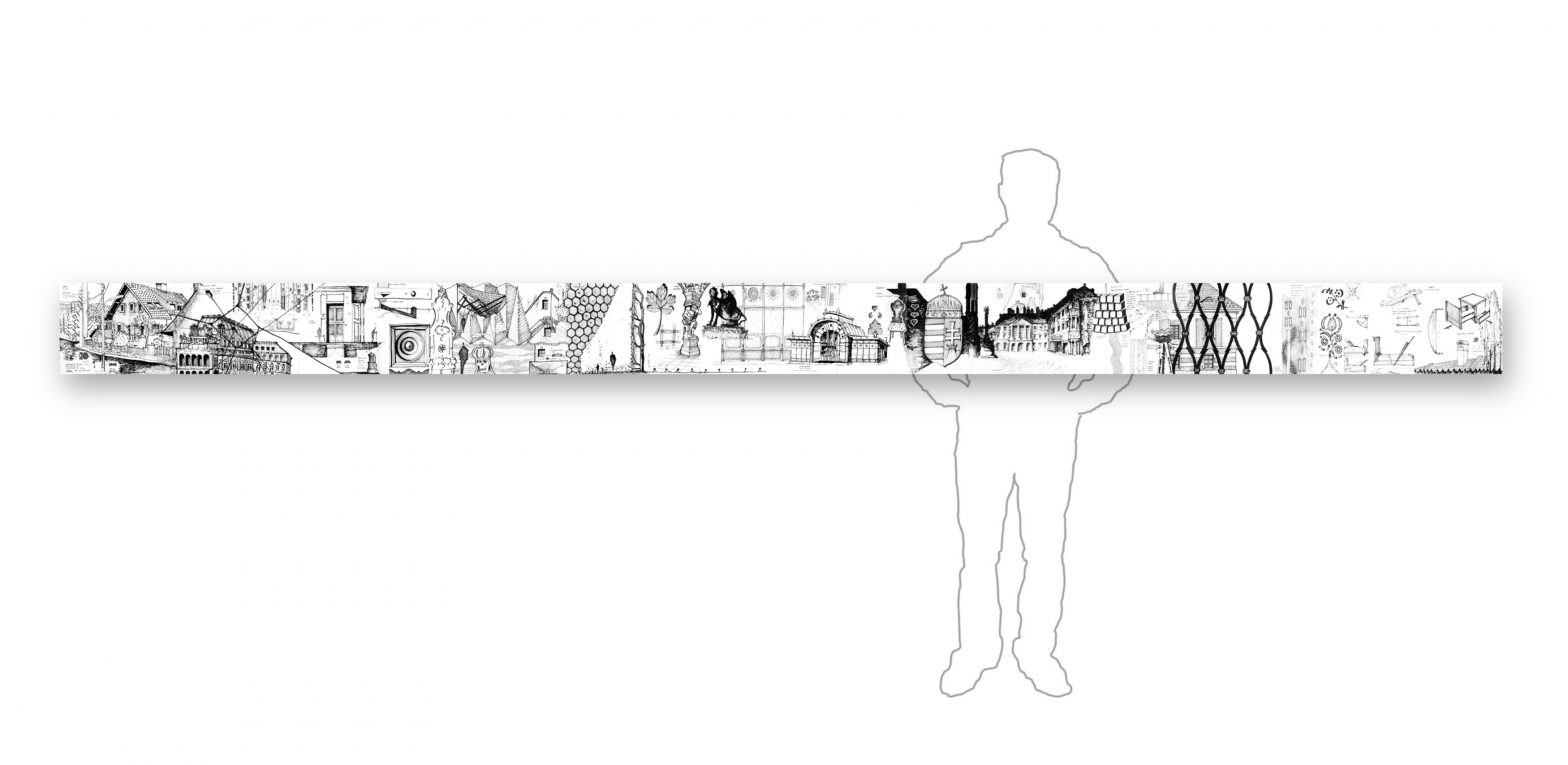6.1.From Austria to Hungary-1-Horizontal-with-Figure
The figure outline in this image is for scale to illustrate the size of the fold-out field drawing. The descriptions of certain key elements and insights are included with the accompanying drawings in this section.
The news periodically includes discussions of emerging markets, and Hungary, as part of Eastern Europe, is one area to watch. My fascination with both Hungary and Japan stem from similar interests in change. Both cultures have over a thousand-year history, both are stereotyped in a large degree by Americans, and both may have changed more dramatically in the past few decades than in the past century. The Soviet Union for all its negative impact provided an unintentional research service. The Soviets kept Eastern Europe in something of a time capsule up until the end of the Cold War in the early 1990s, when I was in Hungary making the sketches on the following pages.
I had the good fortune of gaining some added perspective of a unique chapter in modern history by getting inside the Iron Curtain to Budapest over the summer of 1989, before the fall of the Berlin Wall. My father, who was born and raised in Budapest, escaped in 1957 and came to America. We celebrated the fiftieth anniversary of his arrival in 2007, but at the end of the eighties he was very concerned about the status of his parents’ gravesite. He was naturally anxious about returning himself. As his oldest son, he asked me to return, find the cemetery, and pay the recurring service fee to maintain the gravesite for the next twenty-five years. My experience in the Soviet-controlled Hungary was truly like traveling back in time. The lack of street signage and outdoor advertising was just the tip of the iceberg, and cities like Budapest looked almost the same as they may have if Mozart were to visit back in the second half of the 1700s.
Four years after my first trip, I returned with pen in hand and spent multiple months researching and living in cities and small villages across Eastern Europe.
Please note that the physical sketchbooks that I took to Europe were much longer than ones that I have used over my travels, so in many cases the first set of details are a portion of the larger books.
Author and illustrator: Charlie Szoradi is an architect, inventor, and the CEO of Independence LED Lighting. He writes about many other topics beyond Hungary through his extensive travels around the world.
If you have found this posting online, it is an excerpt from Mr. Szoradi’s book Learn from Looking that served as the inspiring seed content for this drawing share resource. For additional drawings and insights on Hungary and other countries, we hope that you enjoy exploring LearnfromLooking.com. You can search via general terms such as sustainability as well as narrower terms such as Hungary, Budapest, Danube River, etc.


